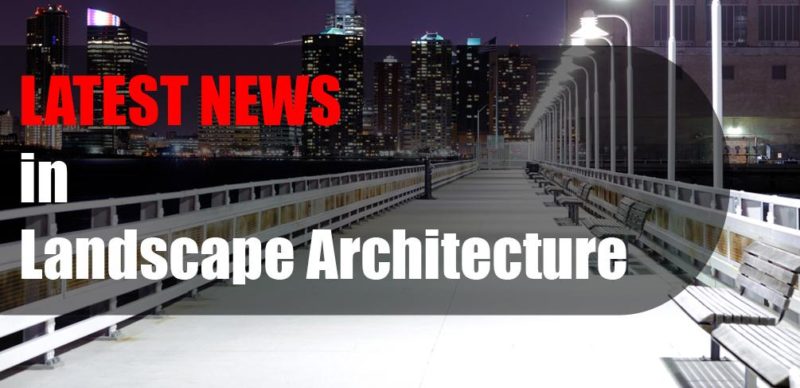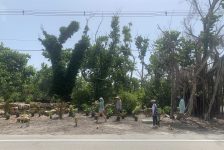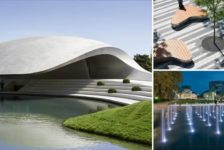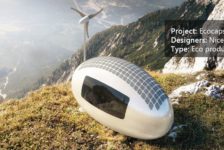16-March-15 In this week’s Latest News in Landscape Architecture we share an interesting interview with Martha Schwartz, highlight an amazing residential apartment complex modeled after a treehouse, and announce Rome’s plans to design an elevated park of their own. Did you know that when you Google “elevated park” you’re presented with about 102,000,000 results! (Click the headline for the full story) Design Professionals Should Be Leaders, Not Followers: Sourceable As the headline says, design professionals should strive to be leaders. However, what does this mean for landscape architects? In a bold op-ed, Daniel Bennett, Vice President of the Australian Institute of Landscape Architects, makes the claim that in order “to achieve a more integrated approach, designers, including landscape architects, need to stand up and make more informed, wider contributions and start lobbying to make these city-shaping projects better for the people they serve.” Ultimately, Bennett contends that designers must leverage their design thinking in the early project phases and challenge the typical flow of project procurement by doing their due diligence rather than simply seeking a ‘brief’. Related Article: 6 Reasons Why Our Future Depends On Landscape Architecture Q&A With Landscape Architect Martha Schwartz: Newsweek One of the top landscape architects in the modern-day recently conducted an interview with Newsweek. Throughout the interview, Martha Schwartz offered tremendous insight on the future of the profession, while reflecting on her more than 32 years of experience. While I encourage everyone to read the entire article, below are a few highlights.
- “The profession has grown immensely. It is the fastest-growing design profession in the U.S.”
- “I also love really tough and rough projects such as post-industrial sites, trying to both heal the ecologies but also make an artistic impact to positively re-characterise the damage to that site.”
- “The issue of demographic, climate, social and political change, and how these forces act upon cities, is going to keep the profession alive and busy.”
Related Article: Top 10 Influential Landscape Architects WATCH: Landscape Architecture – Beyond Green Vertical Forest: An Urban Treehouse That Protect Residents from Air and Noise Pollution: This is Colossal Nestled in northern Italy, Turin is a significant business and cultural destination in the Piedmont region often referred to as the “Capital of the Alps”. While it’s renowned for its neo-classical, renaissance, and art nouveau architecture—something strikingly different has come to the scene. At first glance it looks like a “treehouse on steroids”, but after further analysis this urban treehouse titled 25 Verde is beautifully designed by Luciano Pia. Rising 5-stories, this whimsical residential apartment building houses 150 trees, which absorb about 200,00 liters of carbon dioxide per hour! Rather than trying to artfully describe this project, I recommend clicking the headline above to view the images—simply stunning! WATCH: Work Smarter Not Harder 21 Ways Architects Can Work Smarter, Not Harder: ArchDaily Let’s face it architects [and landscape architects] are counted on by many, including team members, clients, contractors, family, etc. and that’s just the beginning! In order to stay focused, efficient, and productive it’s critical to minimize distractions, however we’re often wondering where to start. Here are a few ways to work smarter, not harder courtesy of ArchSmarter.
- “Remember the 80/20 principle Eighty percent of your results come from just twenty percent of your effort. Focus on results, not work. More hours does not always equal more results.”
- “Tackle the thing you really don’t want to do first thing in the morning, when you’re fresh. Get it done, then you can move on to the tasks you actually enjoy.”
- “Don’t check your email. Process it instead.”
Related Article: 9 Productivity Killers in the Studio and How to Avoid Them Parkour for Kids: The Dirt In the United States, playgrounds are all-too-often destroyed by fears of litigation, injuries, and ultra-protective and unadventurous play amenities. Yet, the Amsterdam-based landscape architecture practice, Carve Landscape Architecture has been designing arguably some of the most intriguing and exciting playgrounds in the world—serving as inspiration of what playgrounds can become. Through bold, bright colors, strong forms, and challenging obstacles, their projects are now popping up in Turkey and Singapore. Last year, Carve designed Interlace in Singapore, which emulates nearby apartment blocks. “While most playgrounds are a contrast to their surroundings – in color, shape, and activity – the new Interlace playground is the mini-version of the surrounding residences.” Related Article: What are the Benefits of Natural Play? Italian Architects Look To Replicate Success of N.Y. High Line in Rome: NPR The famous elevated park known as the High Line, located in the Lower West Side of Manhattan drew nearly 5 million visitors in 2014 making it among one of the most-visited attractions in New York City! Since its inception, several cities have replicated the concept [many are still in the conceptual or construction phase] including Washington, DC (11th Street Bridge Park), Chicago (The 606), Miami (Underline) and now Rome is the latest to jump on the elevated park craze. Under the leadership of Renzo Piano, young architects have formed a team entitled G124 and are transforming an abandoned one-mile elevated concrete stretch into a community space. “When you walk 25-30 feet above ground, it is a miracle,” he says, “because you are still in the city — you feel in the city but you are flying above the city. You are in the middle of trees, and that is a moment of beauty,” exclaims Piano. WATCH: PREVIEW: Great Museums: Elevated Thinking: The High Line in New York City For all of the hottest news continue to follow us on Facebook and Twitter. Have news to share? Send to office@landarchs.com News report by Brett Lezon Return to Homepage
Published in Blog









